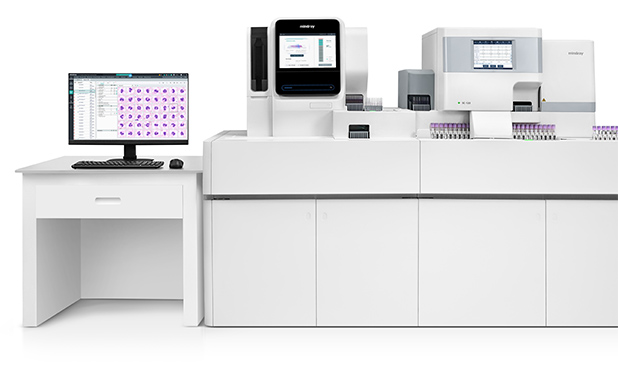Mindray Launches New MC-80 Automated Digital Cell Morphology Analyzer
Posted on 26 Sep 2021
Mindray (Shenzhen, China), a leading global medical solutions provider, has launched the new MC-80 Automated Digital Cell Morphology Analyzer, a revolutionary cell morphology system that provides more clarity, more intelligence and more productivity for morphological analysis.
Combining MC-80, Mindray’s hematology solution is expected to revolutionize the high-end hematology segment. Morphological review of blood cells is a crucial procedure following hematology analysis. Most laboratories need to re-examine more than 30% of their blood samples, but find traditional microscopic review labor-intensive and time-consuming. Automated digital cell morphology analyzers are now available on the market, but providing clear and accurate cell images comparable to the microscope remains a fundamental challenge.

Mindray’s new MC-80 is taking digital morphology analysis to the next level, delivering clearer images which are able to capture abnormalities in more detail. With advanced algorithms, the analyzer enables better identification of different cells with high throughput, resulting in greater productivity. Equipped with advanced multi-layer fusion technology, the MC-80 reproduces the pathological features of cells with clear and authentic images, which helps pathologists to detect abnormal cells more easily and make a quicker diagnosis.
The MC-80 facilitates a smart process and less manual intervention by analyzing the smear in an optimal mode according to the results from hematology analyzers. Its advanced algorithms offer reliable cell pre-classification and pre-characterization, and the high-speed FLY-MODE ensures fast and accurate PLT clump identification. With the remote review function, pathologists are able to review results from multiple locations. The high throughput of 60 samples per hour helps shorten the turnaround time, especially for large-sized laboratories. This greatly enhances diagnostic efficiency and ensures faster delivery of results to patients.
“We have spent eight years developing and optimizing the product by collaborating with over 200 top hospitals worldwide. Meanwhile, we have applied for over 100 patents and solved many problems, some of which had been considered insurmountable in automated digital cell morphology analysis,” said Huan Qi, Director of Clinical Research, Medical Affairs; and Director of Upstream Marketing, IVD, Mindray.
Related Links:














